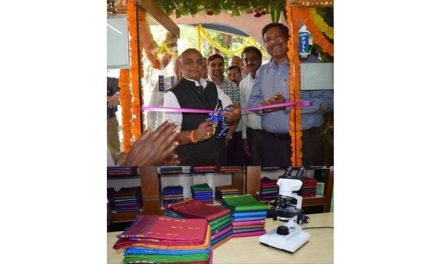 Multiple incentive schemes rolled out by the government, trade agreements with key nations and the declining share of China in the ready-made garment (RMG) market are likely to help India’s exports rise at a CAGR (compounded annual growth rate) of 12-13 percent and surpass $30 bn by 2027, CareEdge Ratings said in a report on Monday.
Multiple incentive schemes rolled out by the government, trade agreements with key nations and the declining share of China in the ready-made garment (RMG) market are likely to help India’s exports rise at a CAGR (compounded annual growth rate) of 12-13 percent and surpass $30 bn by 2027, CareEdge Ratings said in a report on Monday.
“This will help India to achieve an ambitious textile export target of $ 100 bn by 2030,” it said.
CareEdge Ratings said that ready-made garments constituted a major share of around $500 bn in the global textile & RMG trade of around $850 bn in calendar year 2021. The global RMG market is expected to reach around $650 bn by 2027.
The global RMG market primarily comprises the European Union (EU), the US, the UK, Japan, Canada and South Korea together accounting for nearly 60 percent of the total global imports.
Countries such as China, Bangladesh, Vietnam, Germany, Italy, Turkey, Spain and India dominate the export market, with China accounting for a lion’s share of 33% of total RMG exports backed by high labour productivity along with economies of scale, it said.
“Having adequate raw material and a large labour workforce, India is well poised to grab the opportunity in the global RMG market. India has a very good presence across the cotton textile value chain from fibre to fabric, while it has a limited presence in man-made fibre, which is expected to get a boost by expected FTA with the UK and PLI scheme,“ said Krunal Modi, Associate Director – Corporate Ratings.
“Furthermore, having presence across entire-value chain reduces transportation costs and lead time, thereby providing a cost-effective solution to the customers. With all these, Indian RMG exports are expected to surpass the US$ 30 billion mark by CY27. This shall translate into 4.6-4.9% share in world RMG exports as against the current share of around 3%,” he added.
India’s share in global RMG exports has remained sluggish from 2017 to 2021, with RMG exports at around $15 billion in CY21. Countries such as Bangladesh and Vietnam have captured a large part of China’s declining share in global RMG exports.
“Competing nations have gained due to duty-free access to key export markets, i.e., EU, the UK and Canada apart from their higher labour productivity and economies of scale. India’s dependency on cotton-based textiles as against the high share of man-made fibres in the global RMG market also impacted its RMG exports,” the report said.
“With a level-playing field due to trade agreements, India’s share in the UAE and Australian markets could rise and the free trade agreement (FTA) with the UK (likely to be completed in CY23) will be a game changer. However, challenges from competing nations such as Bangladesh and Vietnam remain as they have gained market share to some of the major export markets due to duty-free access amid China’s decline,” CareEdge Ratings said.
The government has set an ambitious target of taking Indian textile exports to US$ 100 billion by 2030 to boost foreign exchange inflow and generate employment. To create a level-playing field for Indian exporters in the global market, the Government of India has rolled out various schemes such as Remission of Duties and Taxes on Exported Products (RoDTEP), Rebate of State and Central Taxes and Levies (RoSCTL), Production Linked Incentive (PLI) scheme, PM Mega Integrated Textile Region and Apparel (PM MITRA) park etc. PLI scheme aims to boost presence in man-made fibre and technical textile, PM-MITRA park is expected to bring scale while RoDTEP and RoSCTL ensure stability of incentives.
The government has also entered into the Comprehensive Economic Partnership Agreement (CEPA) with UAE and the Economic Cooperation and Trade Agreement (ECTA) with Australia and is in an advanced stage of discussion for FTA with the UK while discussion for FTA with EU is ongoing.





















